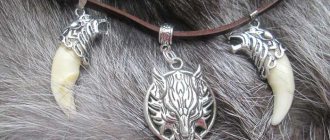Goddess or mermaid?
Legends about Beregin have been formed by our ancestors since time immemorial. According to most experts, this name originally denoted a deity whose main function was to protect all living things. Bereginya is the personification of all the good and positive forces of nature. It is believed that this goddess protected travelers from the machinations of evil entities in the thickets of forests and swamps, and also sent rain on the sown fields in time.
Bereginya is a good deity for everyone who honors the traditions of their ancestors and respects nature. But even she can be angered if natural resources are used irrationally, water bodies are polluted and forests are destroyed. In some legends and tales, Beregini are spirits of nature that live in bodies of water. Occasionally they come ashore, usually at night. There they swing on tree branches and comb their long hair.
Image of a pagan goddess
The mythological image of Beregini is quite abstract. She was originally portrayed as a young, beautiful girl. Later, the deity began to be personified as a spirit - a protector. There are old pictures and modern photos where the Slavic Bereginya appears in a translucent ghostly form.
She values people, protects them, and especially loves young children. However, care does not extend to everyone, but only to those who deserve it. Under the patronage of Beregini are honest, conscientious people who honor the traditions of their ancestors. There is absolutely no negativity in her image; she has never been endowed with punitive power. But if a person indulges in sin, Bereginya will refuse to help.
Images of Bereginya mermaids in folk tales
Bereginya as the goddess of fertility is the embodiment of natural forces and feminine wisdom.
Our ancestors believed that this deity always evaluates a person according to his spiritual qualities, purity of heart and thoughts. Good people should not have been afraid of meeting Bereginya. But those who do not respect nature or have forgotten the traditions of their ancestors could be severely punished by the goddess. The image of Beregini is described somewhat differently in some individual legends. In a number of folk tales this name is used to refer to water spirits. Beregini in these legends appear before the observer in the images of young, ideally built women. They go out to the banks of reservoirs at night and have fun. Beregini cannot move far from water, as they will die if their hair dries out. The beauties play with each other, sing songs in magical voices, weave flower wreaths and track down lonely travelers.
Young men should beware of Beregin. Despite the fact that Bereginya is always a kind and harmless spirit, having played out, she can lure the young man she likes into the pool of the lake and destroy him - tickle him. It is believed that water spirits are afraid of wormwood grass; it is enough just to throw it in their direction to break the spell.
Sometimes Beregin was accused of minor harm to humanity. Our ancestors believed that water maidens could steal handicrafts from women, break fishing nets, and damage dams or millstones. Of course, all these pranks were performed for fun, and not out of malicious intent.
Bereginya in Slavic mythology
Bereginya among the Slavs was considered a symbol of fertility and home; they asked her for health for the whole family, for help in love and protection of a loved one, to protect her from evil forces. Beregini trees are called weeping willow and birch; the latter was called magical by the ancestors, protecting against witchcraft and evil forces. Bereginya is a Slavic goddess, personifying the image of a mother who always helps everyone. But the legends still preserved the following images:
- The progenitor of existence and the guardian of all life on earth. She is accompanied by luminous horsemen - servants of the sun. Therefore, Beregina was often contacted during the harvest months.
- The protector of warriors during battle, she surrounded the brave men with a protective circle and saved their lives. According to legend, she saved the knights from the singing of the Sirin bird, which plunged them into oblivion.
Beregini and ghouls
Bereginya, the goddess of the Slavs, was considered the only one whom ghouls were afraid of. This was the name given to the spirits who brought death and pestilence. The ancestors believed that such personifications of evil were strangers who died not in their native land, but also those buried without a ritual, drunkards or suicides. They were called hostage dead, and sacrifices were made to the souls of the dead to appease them. There was a belief that only Bereginya could stop the ghoul, so the pagan Slavs tried to bring daily demands to this goddess - for the sake of protecting their home and family.
Origin of Beregin
There are several versions about how Beregini appeared. According to the most romantic of them, pure girls who died before marriage became good spirits. Beregins are often depicted with beautiful but sad faces. Such images lead to the belief that these creatures are the reincarnated souls of girls who committed suicide or were abused.
According to another version, Bereginya is the spirit of a wise woman with a kind heart, the strongest sorceress of her kind.
Bereginya Pokosnitsa - a doll-amulet for children and young girls
Amulet dolls are an important part of the protective magic used by Slavic women. Some of them were made for children; there are also several versions of the amulet for protecting the home, easy childbirth and pregnancy.
The Bereginya Pokosnitsa doll depicts a woman during the harvest and haymaking period. The first mowing was always considered a holiday, so clothes for her were made of bright fabric. Such a doll is made without seams, from one piece of material.
Such a doll was considered a reliable children's amulet. In the old days they believed that Bereginya Pokosnitsa would pass on to the child the wisdom of ancient traditions that were passed down from generation to generation. This is a play doll, that is, children played with such rag toys. But it could also serve as a talisman for a young girl who was going for the first harvest of the year.
Read: How to make a Bereginya doll with your own hands.
In general, it is now difficult to say who Bereginya really is - a half-forgotten goddess of the Slavic pantheon, or a collective image of good female spirits who help the living. It is known that Bereginya’s holiday is a good way to beg her for happiness, beauty and health, and a doll depicting Bereginya can become a strong amulet for a child or young girl.
What does Bereginya look like?
Our ancestors believed that Bereginya had very long hair of a light or greenish tint. This deity appeared before people in the form of a beautiful green-eyed woman with ideal facial features and body proportions. Beregini-mermaids often appeared naked before travelers, but sometimes they could be dressed in undershirts. Their hair is often decorated with flowers. Bereginya (as the personification of natural forces) can be depicted in rich folk clothes. Sometimes the goddess's hair is braided in thick and long braids, the color of ripe ears of wheat.
Celebrating Beregini's Day
The festival of honoring the goddess was celebrated on July 15. On this day, it is customary to turn to Beregina with requests for a rich harvest of bread, so that the family does not suffer from hunger during the long winter. All agricultural work was postponed for a while, work was prohibited, as, indeed, on many other pagan dates dedicated to deities.
On Beregini's day, the birthday girl was a young birch tree. People, leaving the outskirts, bowed to the tree, asking for health, reciprocal love, strength, prosperity and protection from the evil eye. They sincerely believed that it was on this day that the spirit of the protectress descends to earth and is ready to listen to all requests.
According to ancient belief, if a girl picks a birch branch early on a holiday morning and hides it under a guy’s door, she will certainly become his bride and get married.
To this day, a beautiful ritual has been preserved in many areas. Embroidered towels were spread on the grass, still covered with droplets of morning dew, so that the fabric absorbed all the moisture. Since ancient times, the beneficial properties of dew have been known: it prolongs youth and beauty. And the dew collected on a festive morning becomes a truly miraculous elixir. They dried themselves thoroughly with damp towels and then hung them on birch trees to dry. The trees took from the tissue everything bad collected from a person and filled it with natural strength bestowed by Bereginya.
Then, such towels that had undergone the ritual were used as a talisman, for example, at a wedding, during childbirth, in the treatment of seriously ill people, in order to scare away evil spirits. Particular attention was paid to the signs associated with the day of the Slavic goddess; the weather was predicted from them:
- large drops of dew promised abundant growth of berries and mushrooms;
- the rain promised a snowy winter;
- yellowed leaves have appeared on the trees - autumn will be early, winter will be cold.
Deity symbols
It is worth noting that Bereginya belongs to the lower pantheon of Slavic gods. Our ancestors perceived her, rather, as a mythical helper and protector. At the same time, the image of this creature remains quite abstract, without clearly defined individual characteristics.
There is also a Slavic symbol. Bereginya is a rune that symbolizes fate and fate itself. This sign is often considered a reminder that higher powers can either give life to a person or take it away.
Each Bereginya has a magic comb. She combs her long hair with it. With this item, a spirit can flood any place. Beregin's favorite tree is the birch - a symbol of the Russian land. Folklore often describes water maidens swinging on the branches of weeping willows growing near the water.
Trees are symbols of the Slavic protector
Bereginya in Slavic mythology is often associated with trees - weeping willow and birch. Therefore, plants had a sacred meaning and became objects of worship.
Among the Slavs, birch is endowed with magical powers that can protect against the tricks of evil spirits. Perhaps this is connected specifically with the pagan goddess, who in the artistic image appeared as a white-trunked birch tree.
Not only the tree itself, but also its branches and leaves have the properties of a talisman. It is not for nothing that birch brooms are considered a favorite bath attribute, as a remedy with miraculous cleansing and healing properties.
Willow trees, bending over the water, watch the mermaids. The goddess is the patron of these fairy-tale creatures; in the past, good mermaids were often called beregins.
Bereginya - folk doll
In some regions of our country, the folk doll Bereginya is also known. We are talking about a powerful amulet, and not about a children's toy. Our ancestors revered their women as homemakers, caring mothers and wise wives. The collective image of the doll included all the best qualities of female nature.
Most often, such a talisman was placed opposite the front door. Its main function was to protect the home from evil spirits and people with bad intentions. And the Bereginya doll was supposed to welcome and attract good and long-awaited guests into the house. In some regions, this amulet, on the contrary, was considered personal. Such dolls were hidden from prying eyes and only occasionally taken out, when alone, to thank or ask for something.
Like all other Slavic amulets, the Bereginya doll had to be made by an experienced craftswoman in compliance with many rules and rituals. Today only a few have this knowledge. And yet we are ready to tell you the general rules for creating your own protector.
Who is the Slavic Bereginya?
Some researchers of Slavic mythology believe that Bereginya among the Slavs is, rather, a collective and abstract image of some ancient feminine force aimed at helping people who live by honor and truth. The deification of such a force and its personification occurred ambiguously and not among all Slavs. There are peoples who still reverence Bereginya as a patron spirit.
Bereginya turns into a Goddess every time she is given names - Zhiva, Lada, Lelya, Dana and others. This is how our Slavic ancestors imagined that the feminine primordial Origin has many forms, incarnations, and aspects. Therefore, Bereginya could well be some kind of Goddess, endowing an individual with her qualities, at the same time she could be an elemental natural spirit.
The word “bereginya” itself, according to experts, could come from both “pregynya” - a forest hill, and from “bereg” - to protect, protect. In the first case, it served to protect nature, and in the second, to protect people from evil. From time immemorial, people believed that Bereginya protects the human race, especially protects small children and helps preserve fields so that they achieve a rich harvest. Let us also highlight three main versions of the emergence of Bereginya:
- Beregini are female maternal powers, initially found only with the Progenitor Family, helping Him to create in every possible way. Subsequently, this power, dividing into itself, was manifested on Earth to help people, keep the fire of the hearth in the house, protect people from evil spells, witchcraft powers, and give fertility.
- Kind mermaids emerging from the water in long white robes with flowing hair. Slavic beliefs endowed them with a fatal fate, believing that they were young, innocent girls who died prematurely. The mermaids at the same time acted as Beregins, protecting the harvest.
- Powerful witches and sorceresses, who after death expressed a desire to protect part of nature, or part of the human race, or some kind of family. In this sense, any Bereginya was classified as a new Goddess (from the world of Navi).
The Rusal-Oberezhnaya theme has been entrenched among the Slavs to this day.
But for the sake of fairness, it should be noted that the spirits of trees, rivers, lakes, meadows, fields, hills, forests, and air were also considered beregins. At the same time with all these “regalia”, the beregins endowed their power with women who got married and became mistresses of their homes. Now and today, good wives who live according to the covenant and law of the Slavic clans are called beregins of the clan, or beregins of their husband, family, and their children. Books of Slavic mythology
Master class on making a talisman
You should start working on any amulet alone, with a calm mood and pure thoughts. Prepare all necessary materials in advance. The main rule is that the Bereginya doll must be made without a single stitch with a needle. To work, you will need scraps of natural fabric in white and red, matching threads, you can use lace and ribbons in suitable shades. If possible, take a little birch bark for the base of the body of the future doll.
Start by making the frame. For it you need to roll birch bark or fabric into a tube. If your doll is entirely textile, fold the twisted flap in half and use a thread to separate the head from the body. When using a birch bark tube as a base, textile bundles such as arms and a head are separately tied to it with a thread.
Bereginya is a talisman that has no face. But to make the head, it is fundamentally important to use white fabric.
Before you start making the doll's outfit, it is important to shape its figure. In Slavic traditions, Bereginya necessarily had lush breasts. This part of the body is also made of a fabric roll tied with threads.
The next step is the doll's clothing. You will have to make a skirt, shirt and apron from scraps of fabric. Remember that you cannot use a needle; all elements must be attached only with threads. Don't forget to make a headdress. To attract wealth and well-being to your home, you can additionally attach a bag of grain and a coin to Bereginya’s body.
Beregin symbols - their meanings
And today the Slavic amulet “Bereginya”, which protects from evil, is considered very popular. Two of these have survived to this day:
Fabric dolls
, as intermediaries in human communication with creatures from another world. They were made without a single stitch with a needle, from white fabric - a symbol of purity of thoughts. Hopes for love and prosperity were invested in such a doll; it was a protective amulet for a person.
- Special embroideries
. The Slavic sign “Bereginya” is still preserved in the following patterns: - tree of life - the legs of the goddess were depicted by roots or snakes - a symbol of the god of the underworld Navi - the Lizard;
- a sketchy figure of a woman with her hands raised up is a sign of protection;
- a figured rhombus divided inside by dots is a symbol of a productive field;
Other popular symbols:
Is there a place for Beregins in the modern world?
Most modern people consider the traditions of our distant ancestors to be hopelessly outdated and irrelevant in the modern world. Many do not even know the meaning of the word Bereginya, and in vain. After all, a real woman should be exactly like this deity. We are talking about a good housewife, mother and wife. During her life, each representative of the fair sex plays many roles: from daughter to grandmother. At every age, you should strive to cultivate and demonstrate only the best qualities of character. The Bereginya woman will always be happy and will be able to build a strong and friendly family.
How to make a Bereginya doll with your own hands
Thinking about the need to acquire a talisman, many immediately go to amulet shops, visit fairs, or order amulets on the Internet. It's simple and fast, accessible to everyone.
It is forbidden to create a doll amulet during illness or in a bad mood.
However, convenience comes with its own dangers. You don’t know whether the master fully adhered to the rule about the naturalness of the material. You don’t know in what mood he took to work and under what conditions he created.
Therefore, the safest way to get a motanka was and remains the option of creating a Beregini doll with your own hands. This is the only way you can be sure that the material is environmentally friendly, as well as that the item carries exclusively positive energy.
Rules for creating a protective doll
When creating protective dolls, the Slavs followed special traditions that mothers passed on to their daughters. They selected special fabrics and colors, embroidered special patterns and prepared amulets for certain days of the week.
For Bereginya to become a strong amulet, you need to know all these subtleties and be able to apply them in practice.
Manufacturing secrets:
- Motankas are called motankas because they are not sewn, but wound. Use needles and scissors only when preparing doll clothes. After that, hide them away so that sharp instruments do not spoil the energy of the amulet, or it is better to do without them altogether.
- Another interesting tradition is not to give protective figures a face. The Slavs believed that navy spirits could inhabit an amulet with facial features. That’s why they made the dolls faceless.
- Bereginya is a special motanka. Often she protected not just one person, but the whole family. Therefore, the creation of this doll must be approached very responsibly. It is forbidden to work on the amulet during illness or in a bad mood.
When winding, use only natural fabrics and threads. The energy of nature will strengthen the power of the amulet, but artificial analogues can turn it into a dummy.
Master class: DIY Bereginya doll
First, let's prepare the materials. Look for fallen birch branches in the forest and cut a 10x30 cm splint from them. Select fabrics, as well as ribbons and threads to match. Ribbons can be taken in red - this color is very suitable for amulets, and among the Slavs it was generally considered sacred. Don’t forget about the filler – it should be natural. It could be herbs or a ball of woolen thread.
Select only natural materials for making a doll amulet.
According to tradition, for Bereginya they took fabric from old clothes. If this is a personal amulet, then you need to take the clothes of the person for whom the amulet is intended. When creating a family amulet, cut rags from the clothes of all your loved ones.
Step-by-step instruction:
- The tree bark is too straight to show off the curvy female form of the chrysalis. So we will make them ourselves. We will wind up some kind of candy from two scraps of fabric, tying one of them with thread in the middle.
- Having placed the tube vertically, glue a “candy” to it, divided in half so as to form a breast. Don't forget to grab the edges of the fabric from the back. Attach the second piece from below, with the convex side back.
- After this, make a ball out of the filler and attach it to the top of the stick. This will be the head.
- Now you can throw fabric over the birch bark and form other parts of the doll’s body. A colorless material measuring 20x20 is suitable for this. Using a red thread, wrap the figurine under the head to form a ball and straighten the fabric along the edges. Take a very long thread.
- Using the thread you just tied up the firebrand, make a cross on the doll’s chest. When the first cross is completed, make several more, moving down the figure.
- Let's start with the clothes. Wrap the piece of fabric prepared for the petticoat around the bark. Secure it to your belt with thread.
- Pass a square piece of fabric with a pre-made cut in the center through your head, and then attach it using the same thread. To do this, lift the flap up and tie its ends with thread around the neck.
- Turn the shirt down, and then secure the ends of the fabric with thread near each palm. Let the protruding material remain below; we will hide it with the overskirt.
- A skirt is not a skirt without an apron. And it is done very simply. A small rectangular piece of fabric is attached to the front and tied with thread on top. To make a beautiful belt, you can weave two threads into one braid.
- The last step in creating the motanka will be tying a bandana on her forehead, and then a scarf. Wrap the ends of the latter so that they are not visible.
The Bereginya doll is ready for your home!
History and meaning of the amulet doll
This is a protective Slavic amulet designed to protect family members from damage, the evil eye and other troubles. The amulet combines the masculine and feminine principles:
- the pillar at the base is a manifestation of strength and resilience;
- the folds of a skirt or sundress are an enveloping care.
The technology of its manufacture was passed on from mother to daughter and served as physical confirmation of the connection between generations.
Bereginya has accompanied the Slavs since ancient times, since pagan times. Her presence is mandatory in every home. She, like other amulet dolls, initially had no face. This way, an evil soul will not be able to move into it, and the doll will never work against its owner. According to another version, facelessness is a Slavic symbol of belonging to the Great Goddess and confirmation of the special status of a conductor of divine power .
To make a doll, scraps of fabric from worn out but beloved clothes were traditionally used. Strong red threads were used to hold the outfit together. This color was considered protective among the Slavs and was suitable for festive attire. At the base there was most often a log or birch bark. That's why the doll is called Stolbushki.
The clan's amulet was always made large, solid and heavy, its size from the palm to the elbow of an adult. The silhouette of the doll resembles a cross: the vertical axis is the base, the horizontal axis is the position of the arms. This sign has nothing to do with Christian themes; it symbolizes the world axis or the prototype of the ancient world tree.
We recommend: The meaning of the Slavic doll Veduchka. How to make a talisman with your own hands?
By its appearance, Beregini can be called the region of its manufacture. For example, the inhabitants of Siberia added a poneva (a skirt made of pieces of fabric with a richly decorated hem) to their outfit; the southern peoples dressed it up over a shirt in a colorful sundress.
The amulet was used by our ancestors not only to protect home and family from external threats. He also maintained internal harmony and tranquility, both for the entire family and personally for the mistress of the house. To protect the newborn, Stolbushka was tied up with a rag baby and special symbols were applied to the clothes. Such a talisman lay in the cradle and protected the child from illness, damage and the evil eye.
Excerpt characterizing Bereginya
- “We surrender ourselves and our lives to Christ God.” “We will surrender ourselves to God,” Natasha repeated in her soul. “My God, I surrender myself to your will,” she thought. - I don’t want anything, I don’t desire anything; teach me what to do, where to use my will! Take me, take me! - Natasha said with tender impatience in her soul, without crossing herself, lowering her thin hands and as if expecting that an invisible force would take her and deliver her from herself, from her regrets, desires, reproaches, hopes and vices. Several times during the service, the Countess looked back at the tender, sparkling-eyed face of her daughter and prayed to God to help her. Unexpectedly, in the middle and not in the order of service, which Natasha knew well, the sexton brought out a stool, the same one on which kneeling prayers were read on Trinity Day, and placed it in front of the royal doors. The priest came out in his purple velvet skufia, straightened his hair and knelt down with an effort. Everyone did the same and looked at each other in bewilderment. It was a prayer just received from the Synod, a prayer for the salvation of Russia from enemy invasion. “Lord God of hosts, God of our salvation,” the priest began in that clear, unpompous and meek voice, which is read only by spiritual Slavic readers and which has such an irresistible effect on the Russian heart. - Lord God of hosts, God of our salvation! Look now in mercy and generosity on your humble people, and kindly hear, and have mercy, and have mercy on us. Behold, the enemy has troubled your land and, although he has left the entire universe empty, has risen up against us; All these lawless people have gathered together to destroy your property, to destroy your honorable Jerusalem, your beloved Russia: desecrate your temples, dig up your altars and desecrate our shrine. How long, Lord, how long will sinners be praised? How long to use illegal power? Lord God! Hear us praying to you: strengthen with your power the most pious, autocratic great sovereign of our Emperor Alexander Pavlovich; remember his righteousness and meekness, reward him according to his goodness, with which we, your beloved Israel, protect us. Bless his advice, undertakings and deeds; establish his kingdom with your almighty right hand and grant him victory over the enemy, as Moses did against Amalek, Gideon against Midian, and David against Goliath. Preserve his army; put the bow of the coppers on the armies that have taken up arms in your name, and gird them with strength for battle. Take the weapon and the shield, and rise up to help us, so that those who think evil against us will be ashamed and put to shame; let them be before the faithful army, like dust before the wind, and let your mighty angel insult and persecute them; let a net come to them that they do not know, and let their catch, having hidden it, embrace them; let them fall under the feet of your servants and be trampled underfoot by our howls. God! You will not fail to save in many and in small; You are God, let no man prevail against you. God our father! Remember your generosity and mercies, which have existed since time immemorial: do not cast us away from your presence, abhor our unworthiness, but have mercy on us according to your great mercy and, according to the multitude of your mercies, despise our iniquities and sins. Create a pure heart in us, and renew a right spirit in our womb; Strengthen us all with faith in you, confirm us with hope, inspire us with true love for each other, arm us with unanimity for the righteous defense of possession, which you and our father gave to us, so that the rod of the wicked does not ascend to the lot of the sanctified. Lord our God, we believe in Him and we trust in Him, do not disgrace us from the hope of your mercy and create a sign for good, so that those who hate us and our Orthodox faith will see, and be disgraced and perish; and let all countries know that your name is the Lord, and we are your people. Show us, Lord, now give us your mercy and your salvation; make the hearts of your servants glad because of your mercy; defeat our enemies, and crush them quickly under the feet of your faithful. For you are intercession, help and victory for those who trust in you, and we send glory to you, father and son and holy spirit, now and ever, and forever and ever. Amen".











